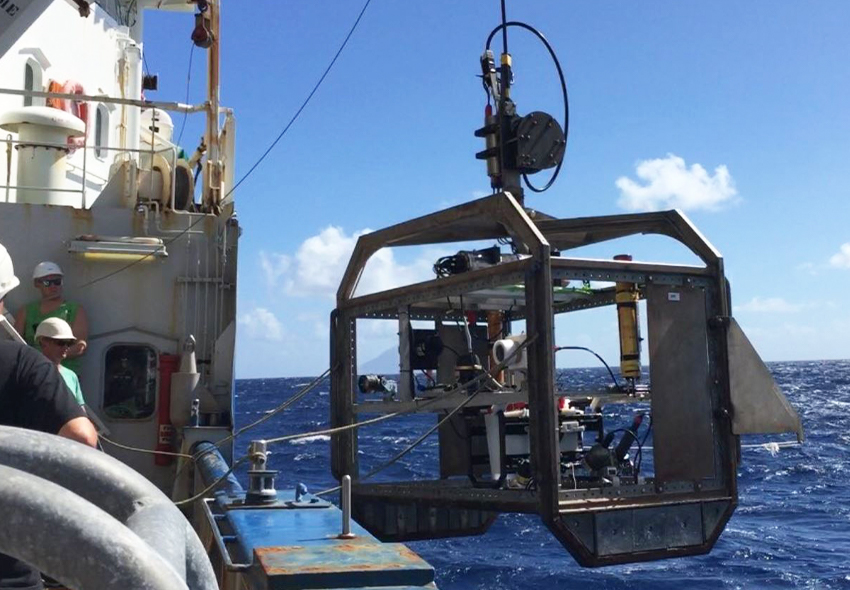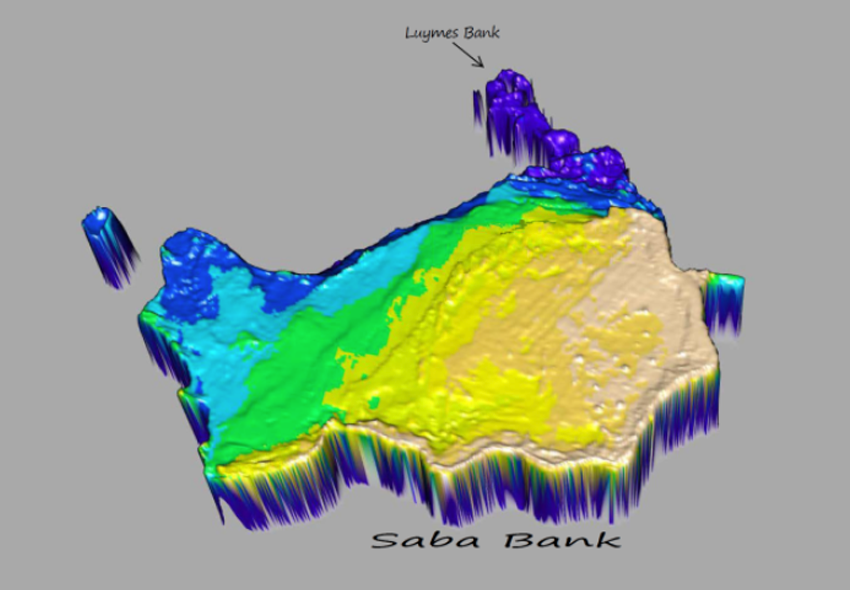Luymes Bank 2019
From 5 - 18 December 2019, Royal Netherlands Institute of Sea Research (NIOZ) and Wageningen Marine Research (WMR) organized an expedition to Luymes Bank, near the Dutch Island of Saba in the Caribbean. Experts on board the research vessel Pelagia hoped to gain more knowledge about the sinkholes and the recently discovered hundreds of strange calcium carbonate algae (CCA) pillars.
5 December 2019 An exciting start to this Sinkhole expedition. On the way there we stranded in Paris because of fog and / or the transport strike in France and Paris. The bus from CDG to Orly luckily still went, but we missed our flight to Guadeloupe. Spend the night in a hotel near the airport. The next day our flight was on time, and we were able to reach the airport on time with a tram despite the strike. All in all, we arrived more than a day late on the Pelagia, where we boarded around 10 pm. local time (agent had forgotten us ...). Fortunately, our cook Hasan had meal ready for us so late in the evening.
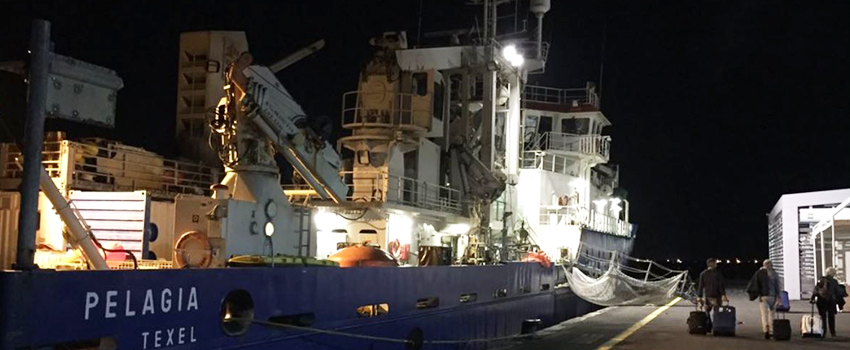
8 December 2019 At 8:00 am. We are at St Eustatius where Johan, Masru and Kimani from CNSI (Carribean Netherlands Science Institute) were already on the quay. John skillfully set the Pelagia along side and Masru and Kimani were quickly on board. Anchors away and we arrived at the first station at around 9:15 p.m. As we have many CTDs in surface water, the men on deck have put the old Niskin rosette back on. Apparently this works faster. Station 1 and 2 ran smoothly. Masru and Kimani are instructed by Matthew and Karel how to take samples from the Niskin bottles for DIC nutrients. Unfortunately we had contact failure with the CTD on station 3. Sven makes every effort to find out where the problem is. If it takes longer we will have to do the rest of the transect (9 stations today) with the Aquaflow. Hopefully the problem will be solved soon. The plan is to drop Masru and Kimani from the CNSI back at the port around 5 pm.
9 December 2019 Another sensational but also extremely stressfull day passed. Beautiful images of the deep carbonate platform (ca 85 m deep) with high cover of coralline algae, Halimeda, sponges and corals. We explored several sinkholes today by lowering the camera system carefully in the sinkholes. In two of them we found again the exciting CCA pillars between 90 and 110m depth. We found extensive fields of CCA pillars in cristal clear waters on the bottom of these sinkholes.
In a neighboring sinkhole of comparable depth, conditions were quite different. Murky conditions, sandy bottom and what appeared a dead army of CCA pillars at one side. The last sinkhole we went into today was almost fatal for the camera system. It hooked onto a steep sinkhole wall. It took a while until we freed it, but damage was done. It will need days to repair cable and connectors. But we have good equipment news as well, the CTD rosette will be operational tomorrow again and we will collect water from the sinkholes for all sorts of chemical and biological analyses. We are eager to find out what more secrets and surprises sinkholes have for us.
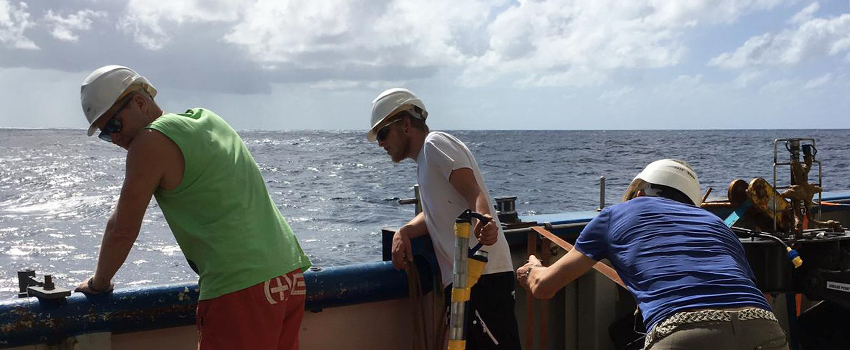
11 December 2019 Yesterday during the last cast with the polyp grabber close to sun set we managed to collect 2 pieces of the calcium pillars around 100m depth in one of the sinkholes. Great excitement when they came onboard. They are really amazing, highly porous, bright red and purple structures, extremely hard, heavy and strong. It took all the force of the grabber to break them off at last. The structures mainly consist of calcium carbonate and are covered as well as mainly built by various species of crustose coralline algae. This was a great catch. Hope for more in the course of the week.
12 December 2019 Another day past. What day is it? You lose track of the different weekdays on board. The food is great and most of us prefer Heineken 0.0 above Amstel 0.0 alcohol when we meet for the program after evening meals.
Yesterday the moorings were deployed in two different sinkholes. Little lights flicker in the night to show where they are. For the day-night sampling, particularly during night it is crucial to see the buoys. Sinkholes with moorings are quite narrow for the Pelagia to navigate in and out, so the light is crucial.
Today the Saba Bank revealed another surprise. Via the Saba Bank marine park we got coordinates of a purported hotspring (found by fishermen) in one of the sinkholes we planned to explore. At ca 280m depth a plume was detected with the multibeam, maybe a methane seep? The CTD profiles showed an amazing steep gradient in among others oxygen in the sinkhole.
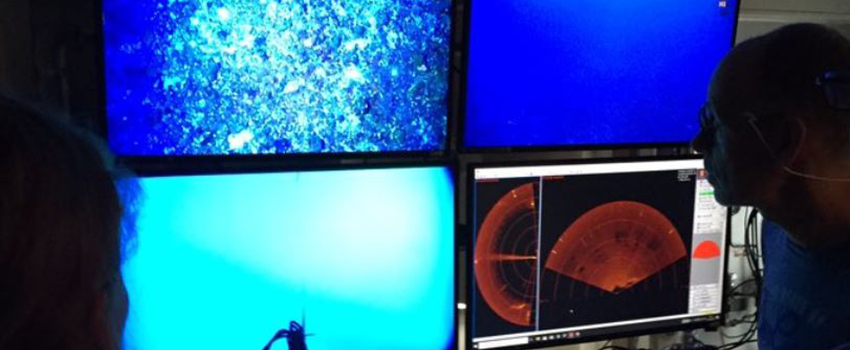
There is apparently stagnant water in some sinkholes, while most of them (explored till now) appeared to be quite well mixed and oxygenated down to the bottom. The boxcore refused to close in this peculiar sediment in this gas seep sinkhole. Hope to have a look at these sediments with the HD video frame in the coming days (repair is ongoing after contact of the frame with a steep wall).
17 December 2019 As mentioned earlyer, one of the sinkholes seems to seep gas. The bubbles don't reach the surface of the water, and we don't know yet what kind of gas it is. We managed to get some sediment samples and they look 'unfamiliar', so we are eager to find out what secret is hiding at the bottom... Tomorrow will be our last day on board before arriving at Guadaloupe, the end of the expedition with a lot of work to take home.
18 December 2019 The team arrived back in Guadaloupe after a fantastic week and a half of exploring the Sababank. They made some amazing discoveries in the world's largest and deepest sinkholes. Yesterday the final sampling was completed, and last night RV Pelagia steamed back from Saba to Guadaloupe. A lot of research work to be done back home!
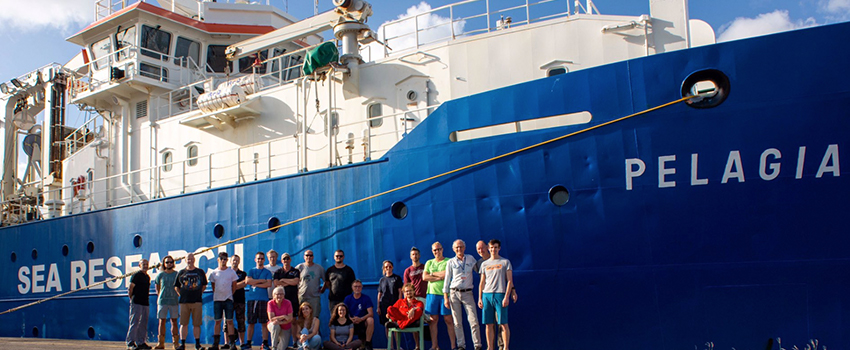
EXPEDITION LUYMES BANK
DEC 2019
FLEUR VAN DUYL
ROYAL NIOZ
